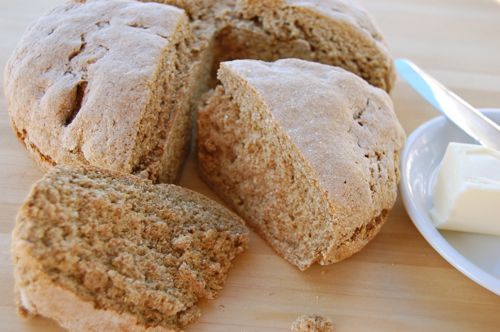Of course this new-fangled chemical leavening wasn’t perfect. Sure it made bubbles in batters, yes it was harmless to ingest. Yet it had a decidedly odd taste compared to yeast. This was especially true if you simply used water to get the leavening reaction going. In that case your quickbread or biscuit would have an extremely bitter taste. Yet there were risks to using acids as well, for if you didn’t get the proportion of pearlash and sour milk just right the finished biscuit would taste even worse, at least if your batter had any fat in it. The reason, because alkaline + fat + heat = soap, which is what you’d get if you didn’t incite a thorough reaction and neutralize all the leavening. This sort of thing can and does still happen, notably in chocolate chip cookies if the baker decides to try to substitute baking soda for baking powder. Blechh.
READ ON
